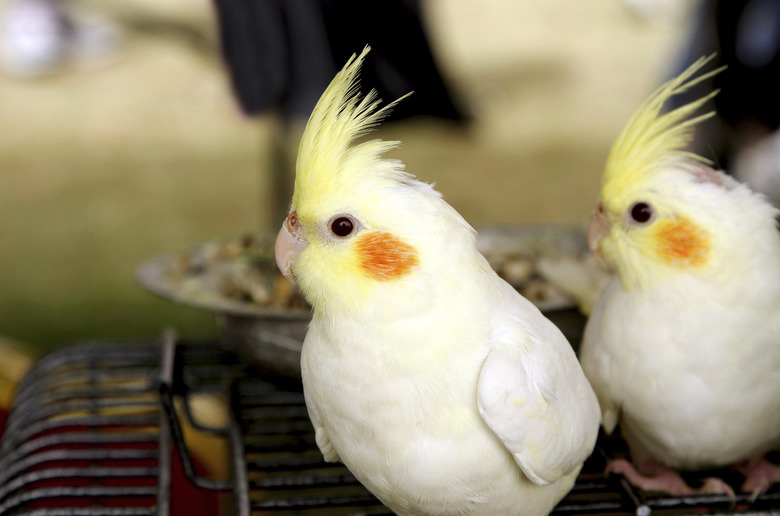How To Tell If Your Cockatiel Is Going To Lay Eggs
If your female cockatiel (Nymphicus hollandicus) is exhibiting unusual behaviors or is looking a little plump, she may be preparing to lay eggs – even if she lives alone. The fact that females can deposit eggs without a male present comes as a surprise to many cockatiel owners. In some cases, excessive egg laying causes health problems. By learning the common signs of impending eggs, you can provide your pet with better care.
Physical Signs
Physical Signs
Cockatiels sometimes exhibit physical and behavioral clues that indicate eggs are on the way. However, because it only takes a few days for each egg to travel from the ovary to the nest, these clues do not last for very long. Cockatiels carrying eggs weigh more than they normally do, so it is helpful if you weigh your bird regularly to track such weight changes. Sometimes cockatiels appear fuller around their lower abdomen and vent area while they are carrying eggs.
Behavioral Clues
Behavioral Clues
It takes a lot of water to fill developing eggs; so, female cockatiels increase their water intake during the process of egg production. Additionally, they may assume unusual postures prior to egg deposition, such as laying outstretched on a perch or the floor of the cage, or raising their tail feathers in the air. Some females sing muted songs during this time.
Open the Floodgates
Open the Floodgates
Once a cockatiel lays her first egg, she will lay additional eggs every 48 hours or so thereafter. Clutches vary in size but can include up to eight eggs. As indeterminate layers, cockatiels will produce new eggs to replace eggs that break, disappear or go bad. Some cockatiels produce multiple clutches each year.
Domestic Life
Domestic Life
Like their domestic descendants, wild cockatiels are cavity nesters. However, unlike pet cockatiels who experience near constant environmental conditions, their free-flying Australian relatives are subject to conditions that change over the course of the year. This seasonal cycle prompts the production of sex hormones, which in turn produce nesting behavior and mating. The primary cues that stimulate breeding behavior include the increase in daylight and an increase in rainfall. In captivity — where light cycles and water availability remain nearly constant — cockatiels may deposit eggs at any time.
Tempting Trinkets
Tempting Trinkets
A variety of stimuli can prompt cockatiels to produce eggs in captivity. Sometimes, items in the habitat can stimulate cockatiels to breed or deposit eggs. For example, if you provide your bird with an enclosed nest and fibrous nesting material, such as paper strips or straw, she may produce eggs. Additionally, constant access to bathing water may trick her body into thinking that the spring rains have arrived and it is time to produce eggs.
Calcium Considerations
Calcium Considerations
The calcium demands on an egg-laying female are significant. Accordingly, it is important to ensure that egg-laying cockatiels have access to sufficient calcium. Avoid problems by giving your cockatiel calcium-rich foods such as leafy green vegetables. Provide her with a cuttlebone, which she can nibble at will. Be sure to discuss your bird's calcium needs with your veterinarian to ensure she is not likely to develop deficiencies.
